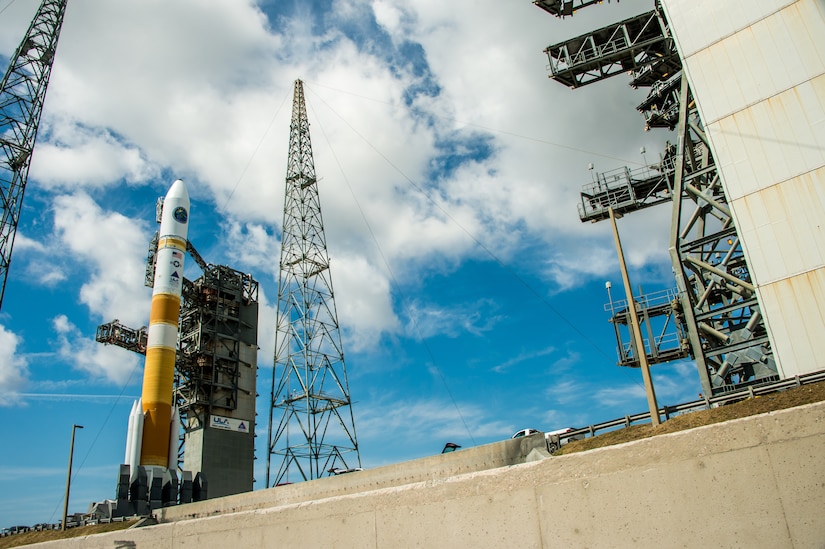May 6, 2020 | BY Jim Garamone , DOD News
Air Force Secretary Barbara M. Barrett and Space Force Gen.
John W. Raymond cast some light on the previously classified missions of America's
reusable space plane, the X-37B.
The two spoke today during a webinar hosted by the Space
Foundation. They updated the audience on the progress the U.S. Space Force has
made.
The two showed a recruiting video about the Space Force, and
in it Barrett revealed that one part of the presentation showed the X-37B's
return to Earth. The X-37B is an unmanned space plane boosted into orbit by a
rocket and gliding to Earth like the space shuttle. Built by Boeing, the craft
has completed five missions with a total of 2,865 days on orbit, Barrett said.
The Air Force's Rapid Capability Office has combined forces
with the Air Force Research Lab, and now with the U.S. Space Force to execute a
mission that maximizes the X 37-B's unique capabilities, she said. "This
important mission will host more experiments than any prior X-37B flight,
including two NASA experiments," she added.
One of the experiments will test the reaction of
"significant materials" to the conditions in space," Barrett
said. A second experiment will study the effect of ambient space radiation on
seeds. A third experiment, designed by the Naval Research Laboratory,
transforms solar power into radiofrequency microwave energy, then studies
transmitting that energy to Earth, Barrett said.
That mission will launch from Cape Canaveral, Florida, May
16. "The Space Force dedicates this flight to the nation's first
responders and frontline professionals who keep America strong," the
secretary said.
The Space Force is already running with roughly $15.4
billion in the fiscal 2021 budget request. That will fund next-generation
overhead persistent infrared satellites, launches of two GPS satellites and
three additional national security launches.
Raymond said it is a critical and exciting time for space.
"There are advances being made in all sectors of the space domain, whether
it's national security space, commercial space; whether it's civil space with
the moon-to-Mars program. I would also include international space," he
said.
The Space Force is needed now because potential adversaries
see space as a warfighting domain, the general noted, and the strategic
environment in space has changed. "We've seen Russia maneuver a satellite
with characteristics of a weapon system in proximity to a U.S. satellite,"
he said.
Russia has also tested a direct-ascent, anti-satellite
weapon. "And just in the past few weeks, Iran attempted to launch an
operational satellite in making a claim for becoming a space power," he
said.
Many of the American systems were designed and launched when
space was a benign domain, Barrett said. They provide a range of capabilities
that not only the U.S. military, but the civilian world takes for granted.
These include the Global Positioning System, instantaneous communications, even
the platform for the webinar. The systems are vulnerable to malign actors.
"It is important for us to deter aggressive action
against American assets," Barrett said. "But if deterrence fails, we
need to be prepared to defend and, if necessary, shoot back."
The Space Force is dedicated to building the space
capabilities needed and to defending those capabilities, she said. The
operational side is important, but so is developing the doctrine needed to
police the actions that are taking place in space and setting the expectations
for what is fair behavior and appropriate behavior in space, the secretary
said.
Manning the Space Force is a key to moving forward. Raymond
and his senior enlisted leader, Chief Master Sgt. Roger Towberman, were the
only members of the new service until last month, when 86 graduates of the U.S.
Air Force Academy joined them. The service has not had a problem attracting
recruits. Barrett said there has been "an avalanche" of applicants.
Raymond said there will certainly be a reserve component
part of the new service, noting that the Space Force already works closely with
the Air National Guard and the Air Force Reserve and sees a similar
organization in the future. He also noted that service members in other
branches of the military may be accepted into the Space Force as well.








No comments:
Post a Comment